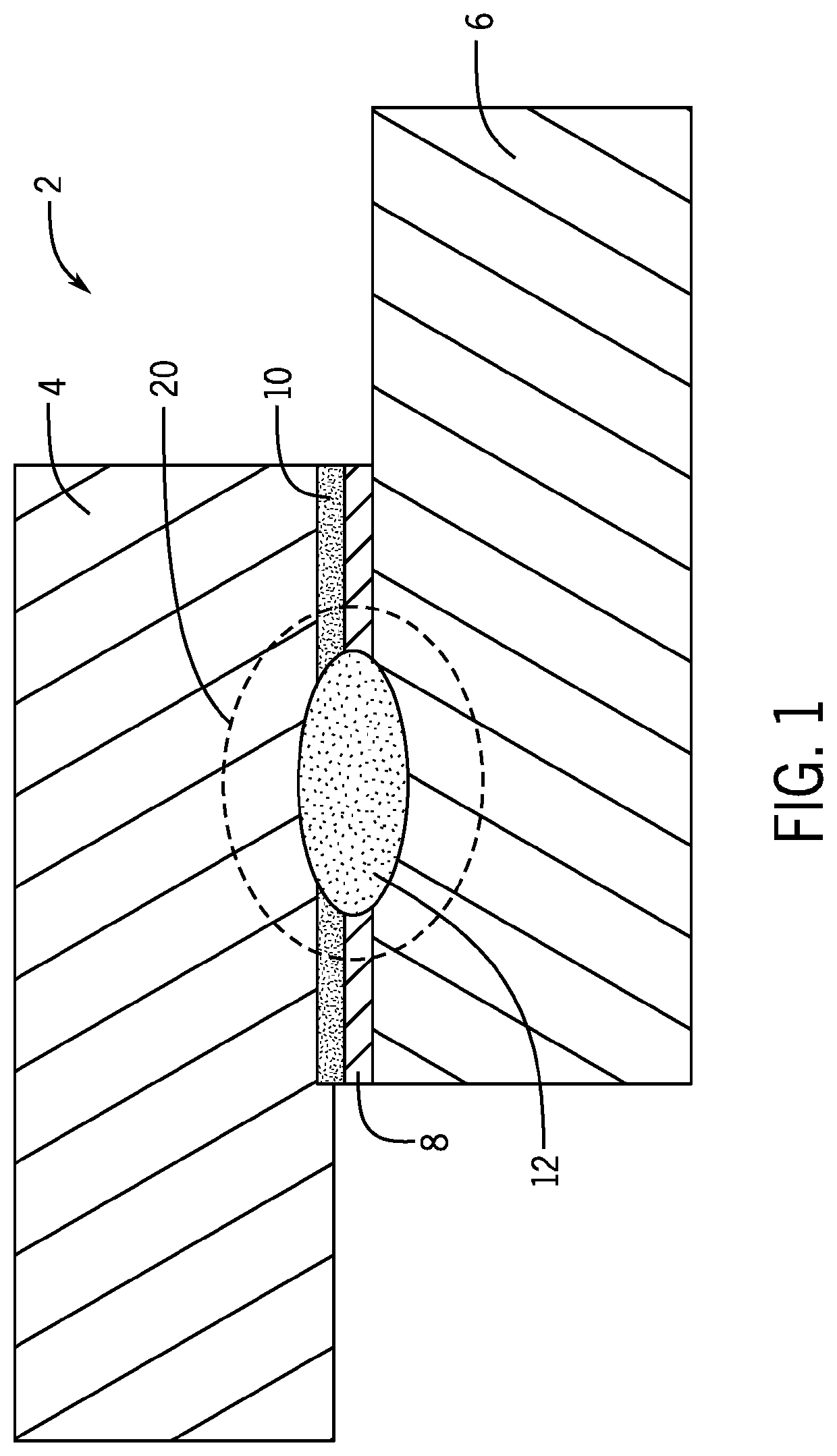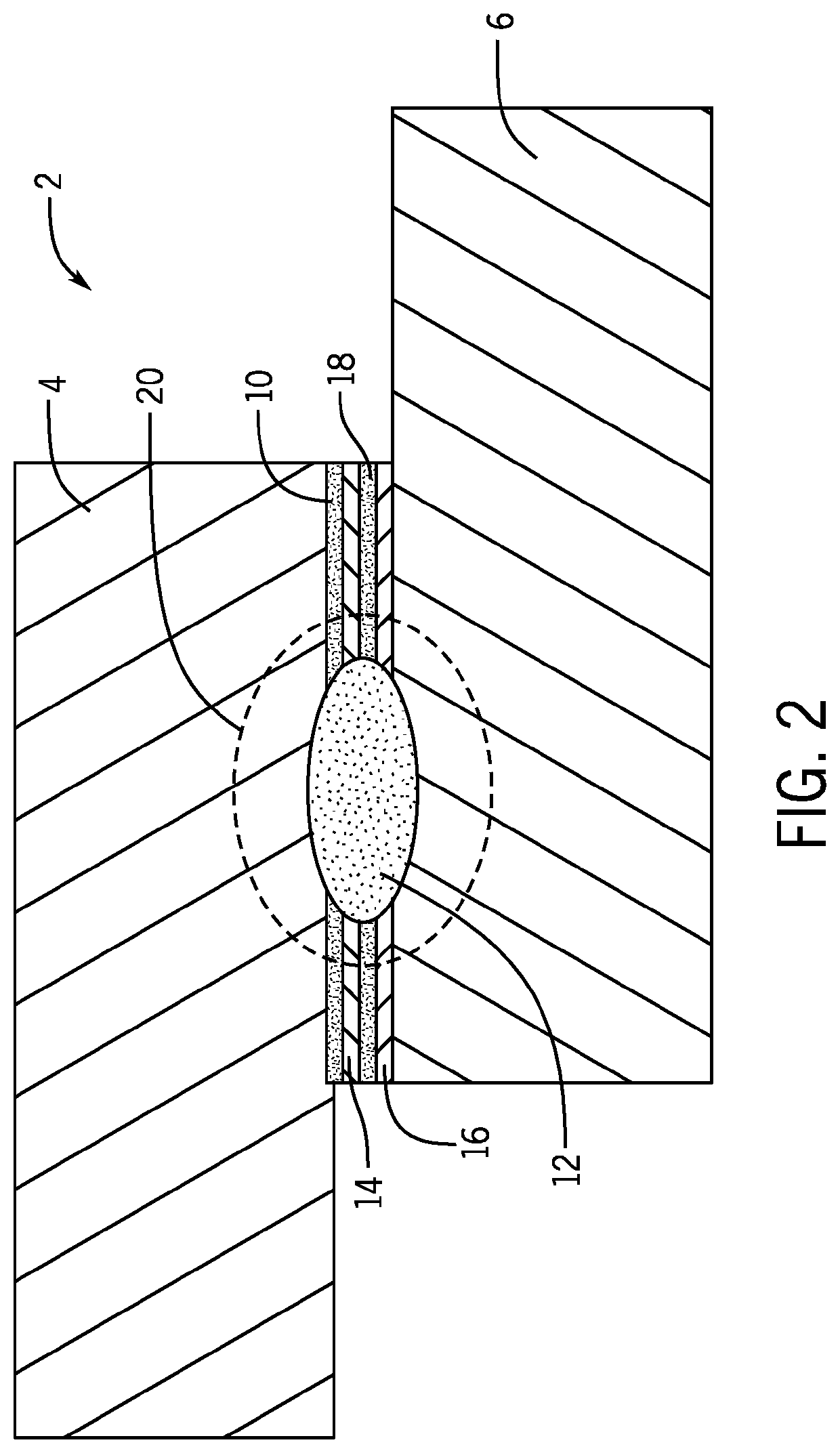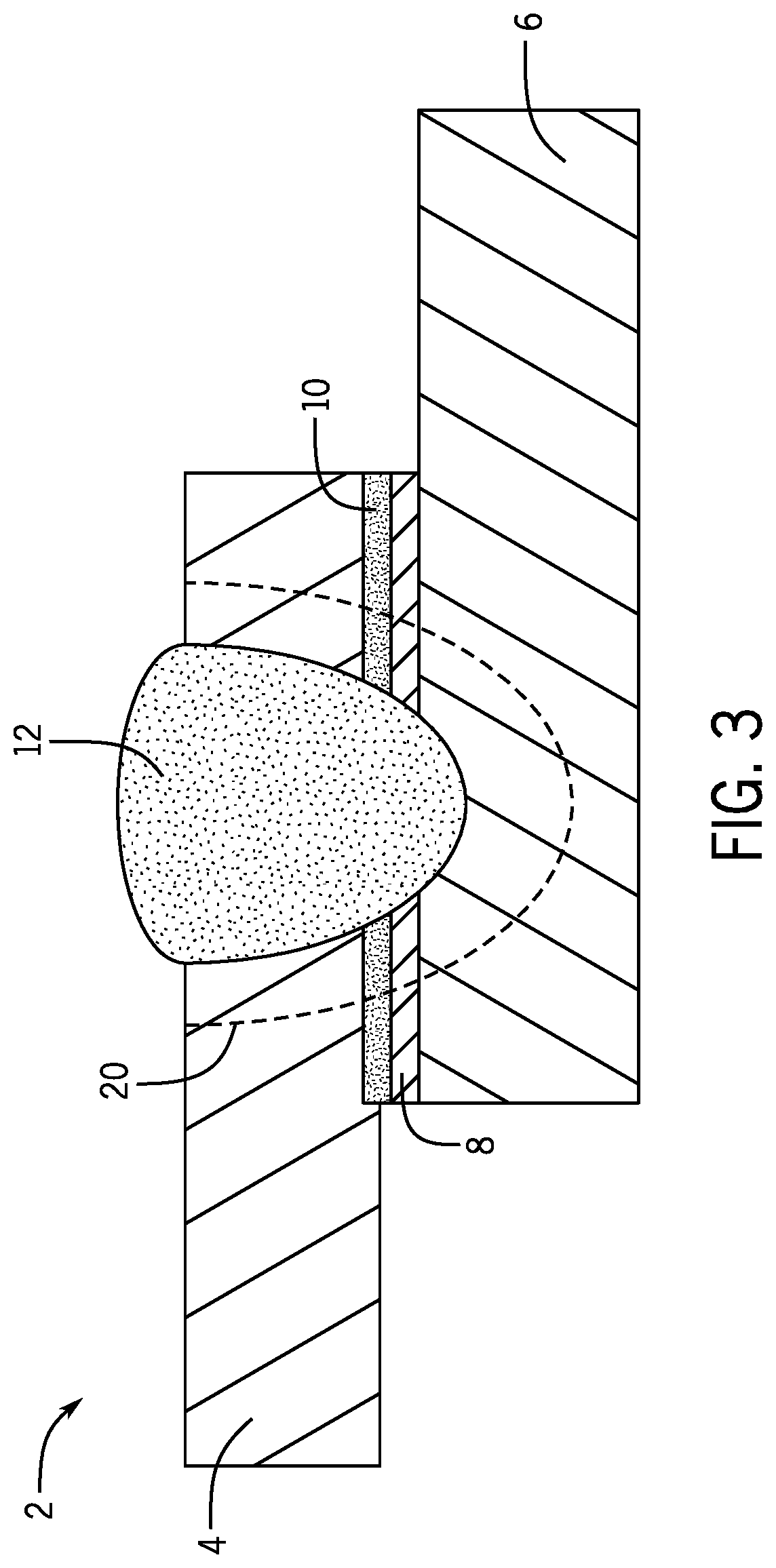UAM transition for fusion welding of dissimilar metal parts
a technology of dissimilar metal parts and transitions, applied in the field ofua, can solve the problems of increased weight of mechanical fasteners, increased cost, parts and assembly time, new infrastructure, and increased cost of additional capital investment, and achieve the effect of reducing the cracking of fusion welds
- Summary
- Abstract
- Description
- Claims
- Application Information
AI Technical Summary
Benefits of technology
Problems solved by technology
Method used
Image
Examples
Embodiment Construction
[0011]Referring now to FIGS. 1-4, a welded assembly 2 includes a first component 4 comprising a first metal material, a second component 6 comprising a second metal material that is dissimilar to (i.e. different from) the first metal material, and a transition material 8 arranged between the first and second components 4, 6 and comprising a high entropy alloy, pure element, or alloy sufficiently compatible with the first material and second material. The transition material 8 is ultrasonically welded to the first component 4 via a process such as ultrasonic additive manufacturing (“UAM”) to create a solid-state interface (i.e. UAM weld or ultrasonic weld 10) between the first component 4 and the transition material 8, wherein the UAM weld 10 includes a portion of the first component 4 and the transition material 8.
[0012]UAM is a solid-state (i.e. no melting) metal welding process based on ultrasonic metal welding, which provides fully dense, gapless three dimensional parts. In the u...
PUM
| Property | Measurement | Unit |
|---|---|---|
| vibration frequency | aaaaa | aaaaa |
| vibration frequency | aaaaa | aaaaa |
| temperatures | aaaaa | aaaaa |
Abstract
Description
Claims
Application Information
 Login to View More
Login to View More - R&D
- Intellectual Property
- Life Sciences
- Materials
- Tech Scout
- Unparalleled Data Quality
- Higher Quality Content
- 60% Fewer Hallucinations
Browse by: Latest US Patents, China's latest patents, Technical Efficacy Thesaurus, Application Domain, Technology Topic, Popular Technical Reports.
© 2025 PatSnap. All rights reserved.Legal|Privacy policy|Modern Slavery Act Transparency Statement|Sitemap|About US| Contact US: help@patsnap.com



